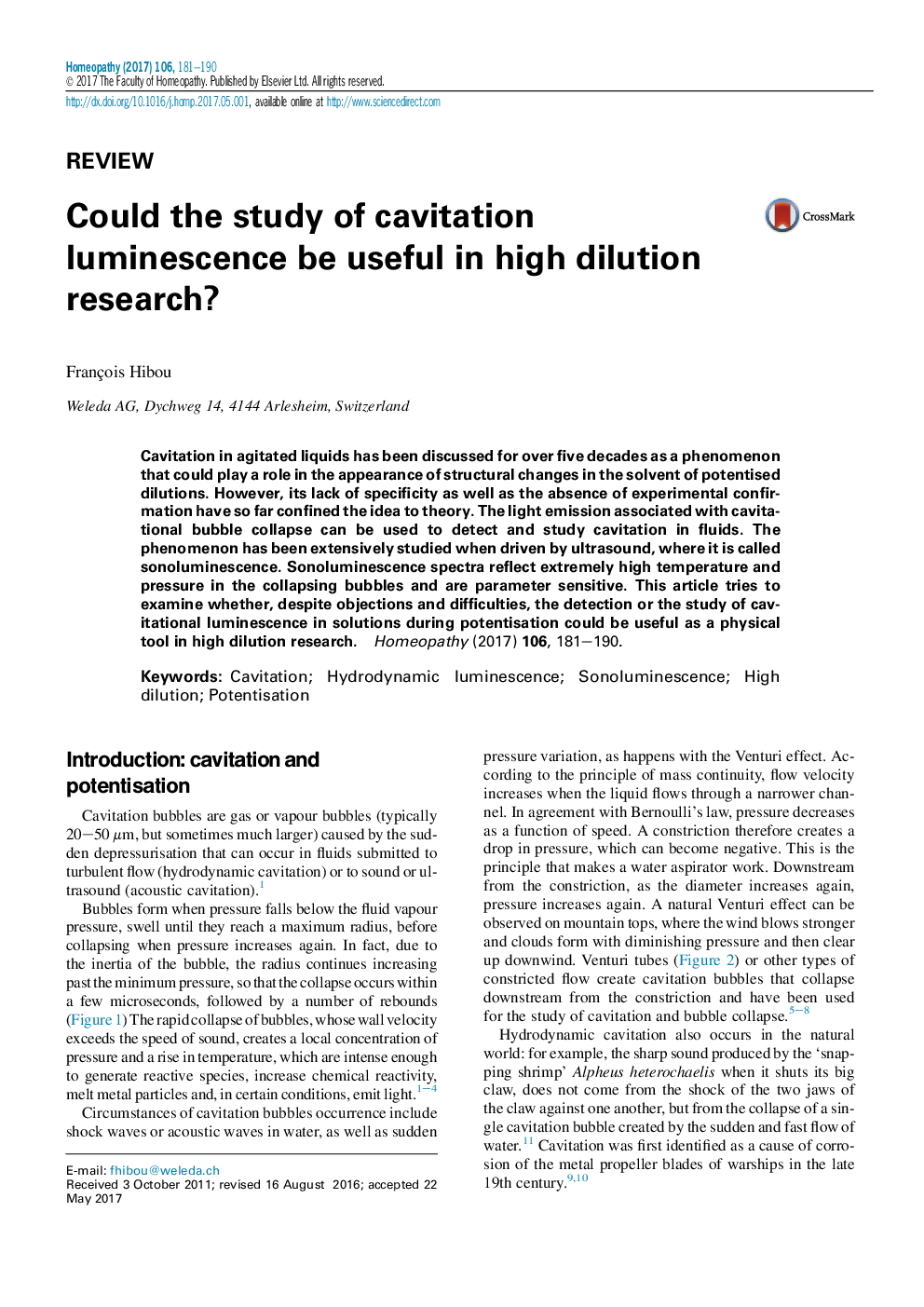| Article ID | Journal | Published Year | Pages | File Type |
|---|---|---|---|---|
| 5565269 | Homeopathy | 2017 | 10 Pages |
Cavitation in agitated liquids has been discussed for over five decades as a phenomenon that could play a role in the appearance of structural changes in the solvent of potentised dilutions. However, its lack of specificity as well as the absence of experimental confirmation have so far confined the idea to theory. The light emission associated with cavitational bubble collapse can be used to detect and study cavitation in fluids. The phenomenon has been extensively studied when driven by ultrasound, where it is called sonoluminescence. Sonoluminescence spectra reflect extremely high temperature and pressure in the collapsing bubbles and are parameter sensitive. This article tries to examine whether, despite objections and difficulties, the detection or the study of cavitational luminescence in solutions during potentisation could be useful as a physical tool in high dilution research.
